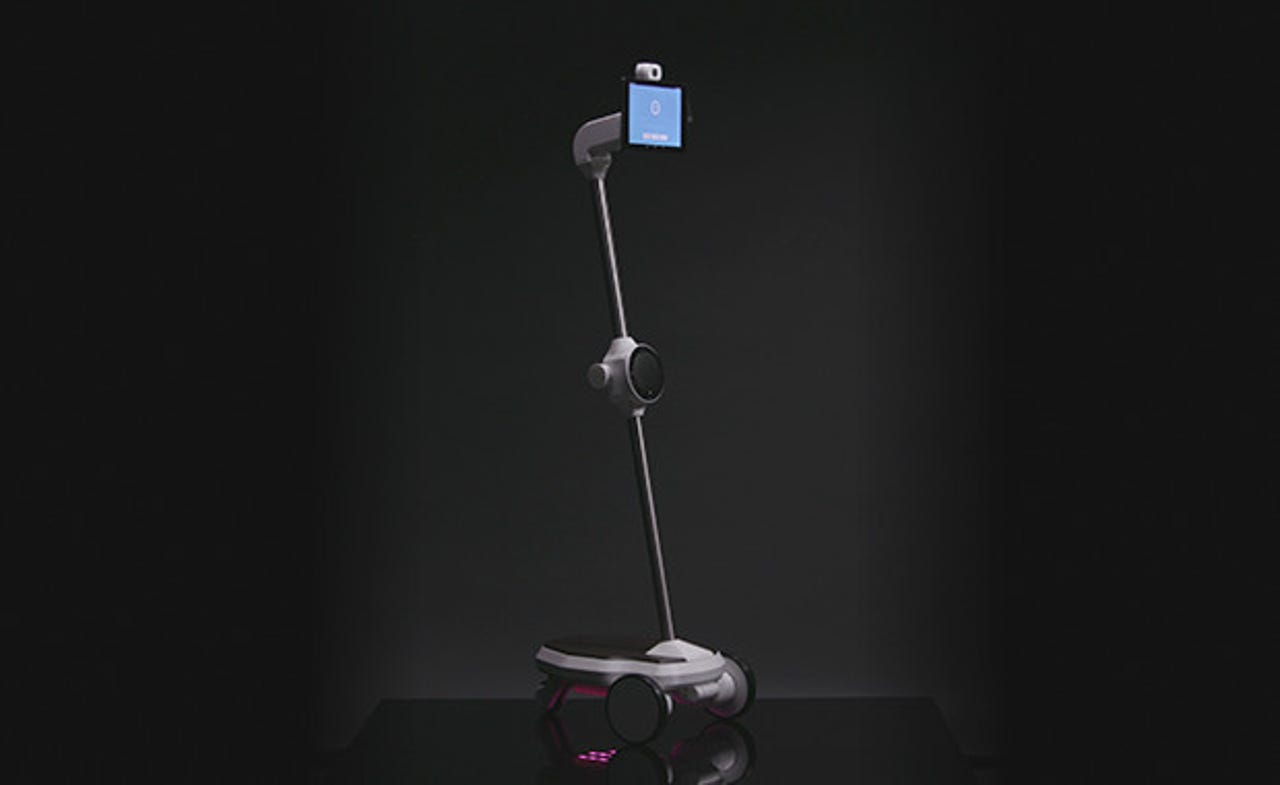Meet Ohmni, a telepresence robot for technophobes


The Ohmni telepresence robot has already helped one man save his mother's life.
He grew concerned when his mother didn't answer the phone one morning, so he logged onto a robot that was installed in her home as part of a pilot program. He was out of town on business and she was indisposed, but he used Ohmni's software to immediately connect to a live video call and drive the robot around her house, where he found his mother doubled over in the bathroom, very sick from what turned out to be a severe urinary tract infection. He called 911 and got his mother the medical help she so urgently needed.
"These are the things that make it worth our journey," says Thuc Vu, co-founder and CEO of OhmniLabs, in an interview. Back in college, Vu and his roommate Jared Go worked on robotics research together and dreamed that there would soon be robots helping with chores in every home. But when reunited ten years later, in 2015, even though there had been major progress in robotics, most robots were either in factories or military applications.
Robotics
"In the home we either have a toy robot or a vacuum," Vu says. "That's it."
So, together with a third partner, software and systems expert Tingxi Tan, they launched OhmniLabs to make a robot for the consumer market. While other telepresence robots are designed primarily for business environments or other structured institutions, Ohmni is meant for the home. Its main purpose is to help people communicate with each other, even when they are thousands of miles apart.
Go, who is now CTO of OhmniLabs, says that telepresence isn't ideal for business settings, such as organized meetings in stuffy conference rooms. "Telepresence is best in unstructured environments like homes," he says. At home, people can use a robot to hang out naturally, as if they are there in real life. A conversation can move from the study to the sofa because it's more comfortable.
He explains, "And because it's more comfortable, people hang out longer, and because they hang out longer, they feel closer than they do with Skype or FaceTime.
Unless the robot is set on "do not disturb" mode, users can dial right into the robot and virtually enter a room without so much as a knock on the door. Certainly, privacy is sacrificed, but this ease of use has been key to getting skeptics and technophobes on board because they don't have to turn on an intimidating device or even launch an app. The robot just sits on its dock until a loved one logs in and says hello.
While he works on growing OhmniLabs in Silicon Valley, Vu uses a robot to stay in touch with his grandmother in Vietnam. Despite the distance and her lack of a smartphone, she has been teaching him to cook his favorite dish.
He says, "Basically I just show up and say, 'Grandma, what are you doing? Oh, you're cooking?' It makes it really easy and natural for her."
The robot weighs just 18 pounds, so if it bumps into a person or an object there is minimal impact. It consists of a touchscreen tablet, two wide-angle HD cameras, and a speaker in the middle. Integrated hardware and software called MotionMap technology makes it possible to use a mouse or touchpad for direct control of the robot's body.
The neck of the robot can move so that users can nod or look in any direction to make conversations feel more natural. "With all our testing," Go says, "we found that it's the single most important piece to making it feel like someone is there with you. Say they're sitting, and you can look down at them, and rather than going around as if you have a neck brace on, you can emote by nodding."
The battery is made of lithium iron phosphate, which was chosen because it is safer than other commonly-used lithium ion batteries. It lasts five hours and the robot has an autodocking feature which helps make recharging easy. The robot's base can be customized with different colors and materials, and it contains technology called Glide Drive, which includes powerful but quiet brushless motors. The goal is not to disturb anyone with clunky robot noises, but robotic tiptoeing also ups the creep factor for a device that is inherently invasive.
There is no software to install -- you just log onto the website with an existing Google or FaceBook account. The robot can even be pre-programmed with Wi-Fi information so that setup just involves unfolding it and turning it on.
All of these design choices were made with communication in mind. Vu says, "Engagement is really good. People use our product for more than 30 minutes at a time. Eighty percent of them strictly use our product as their main communication channel because they're so comfortable and it's easy to chat on the robot. People tell us their conversations are now 10-20 times longer."
OhmniLabs launched an Indiegogo campaign on Wednesday. Early backers can get a robot for $1399. The robots are already being made in-house with additive manufacturing cells, or in other words, a room filled with off-the-shelf 3D printers that have been heavily modified for the job.
The open software platform can integrate with third party devices such as medical sensors or Amazon's Alexi API. The Carnegie Mellon roommates' dream of creating a true robot assistant for the home hasn't died.
Vu says, "The idea is to get in front of users and make sure we fit into people lives, and then we will incrementally add more features such as arms onto the robot so that it can provide more task services in the home such as picking up objects, turning of the stove, and giving hugs."
VIDEO: The Ohmni home robot will transform how families communicate